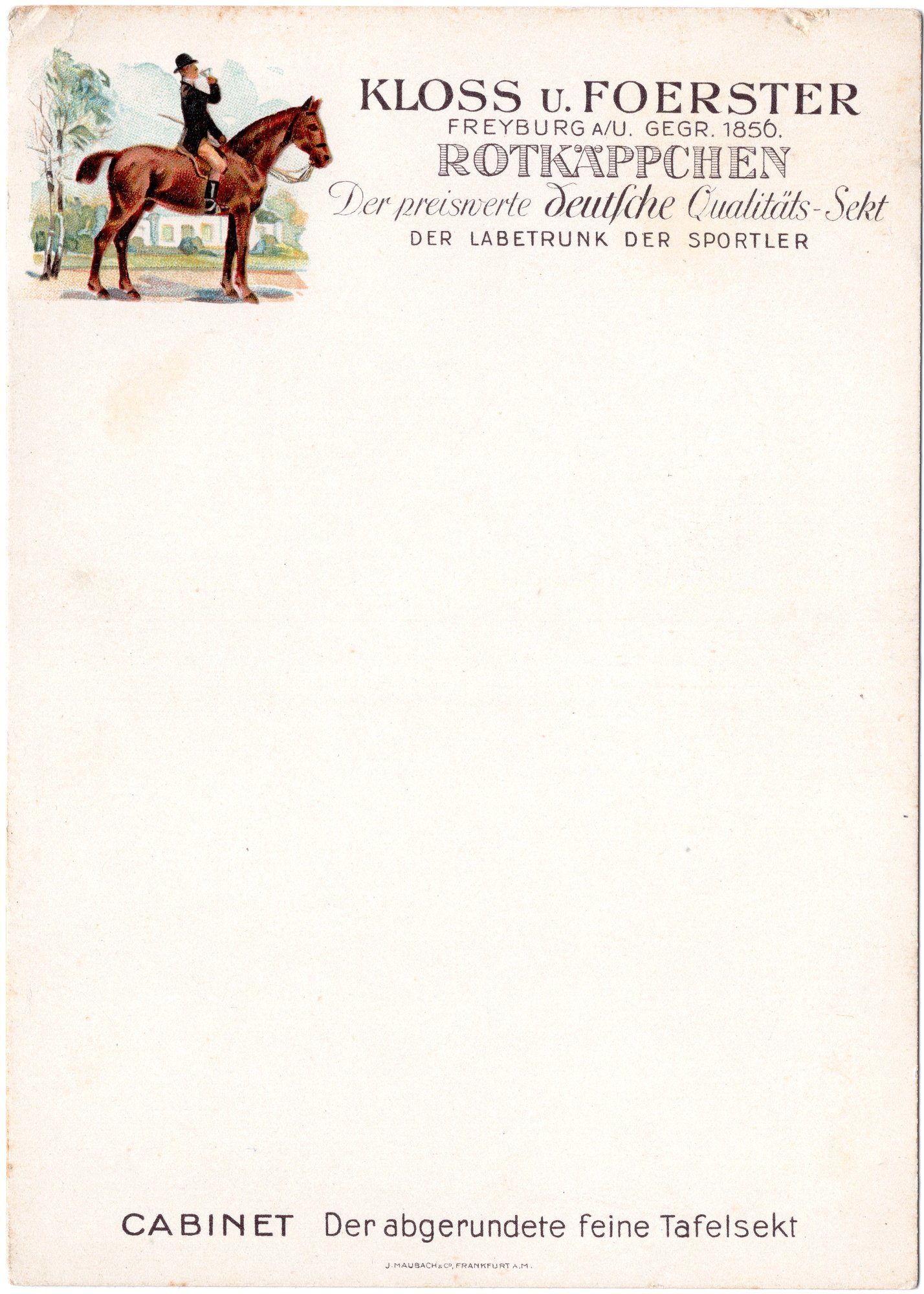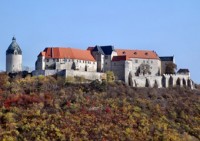Die Werbepostkarte der Sektkellerei Kloss & Foerster wurde bis etwa 1940 von der Steindruckerei J. Maubach & Co. in Frankfurt am Main gedruckt und herausgegeben. Am oberen Rand wurde sie links mit einer kleinen Farblithografie versehen. Abgebildet ist ein Reiter, der auf einem Sportpferd sitzt. Er hat die rechte Hand gehoben und setzt ein Glas Sekt zum Trinken an.
Rechts daneben ist zu lesen:
KLOSS U. FOERSTER
FREYBURG A/U. GEGR. 1856.
ROTKÄPPCHEN
Der preiswerte deutsche Qualitäts-Sekt
DER LABETRUNK DER SPORTLER
Am unteren Rand der Postkarte ist weiterhin lesbar: CABINET Der abgerundete feine Tafelsekt.
Die Postkarte ist nicht gelaufen.
en

